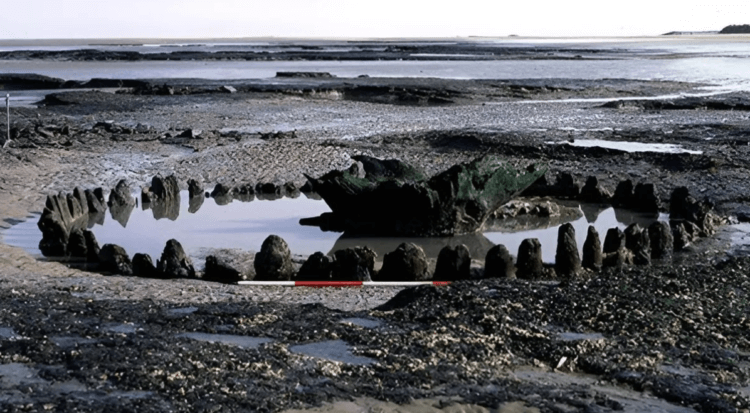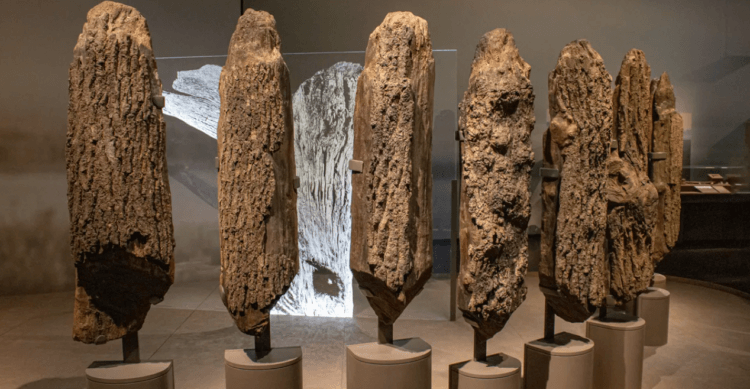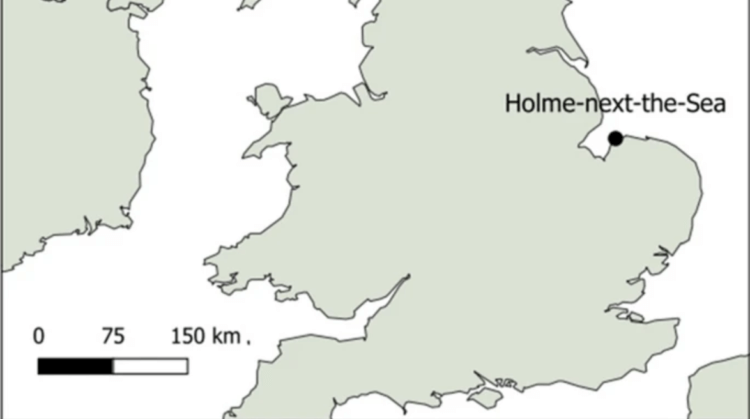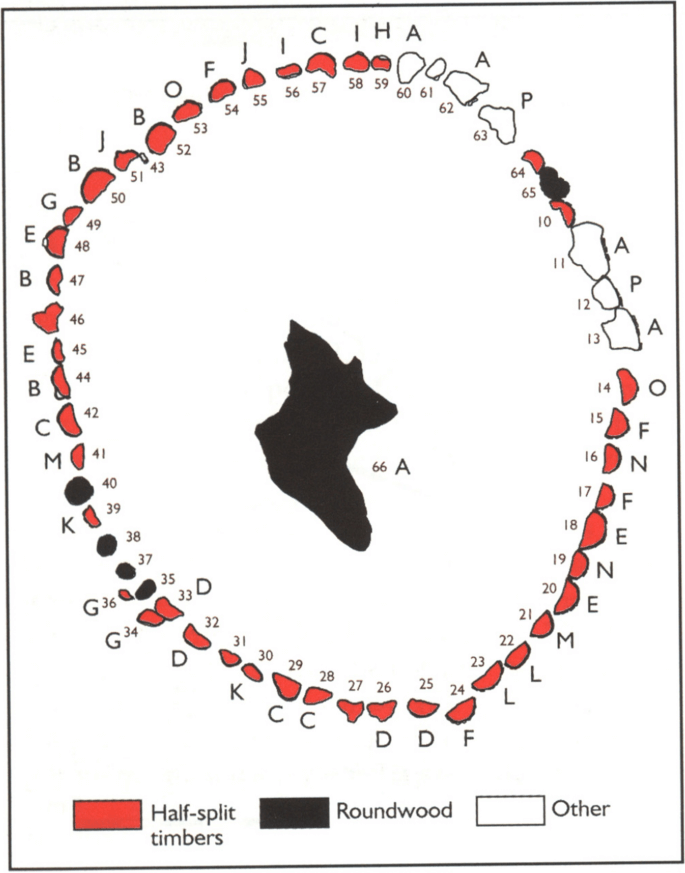Everyone knows about the existence of the ancient megalithic structure Stonehenge in the southwest of England, as it is one of the most famous archaeological sites in the world. However, few people know that on the east coast of the country there is another equally interesting prehistoric monument known as Seahenge. It was discovered relatively recently – in 1998 and was named by analogy with Stonehenge. The structure is also a circle, but consisting not of stones, but of 55 tall oak pillars. Inside the «circle» there was a large oak stump. The pillars are dated to the 21st century BC, that is, their age is about 4000 years.

Seahenge, or Hill I, was discovered in 1998. Photo source: iflscience.com
The ancient structure of Seahenge
Seahenge, also known as Hill I, was discovered by accident, thanks to tidal erosion that exposed the monument on one of the beaches in the English county of Norfolk. The oak pillars formed an oval measuring 6 by 7 meters. In the center, as mentioned above, there was a large stump, and it was upside down.
The structure was originally built on salt marshes far from the sea on an area with sand dunes and mudflats. Gradually, a layer of peat formed on the site of Seahenge, which eventually completely absorbed the pillars and thereby allowed them to be perfectly preserved for thousands of years.
It must be said that just 100 meters from Seahenge, archaeologists discovered another similar structure, called Hill II. After studying the rings on the logs of both structures, scientists came to the conclusion that they were built at the same time – around 2049 BC, that is, several hundred years after Stonehenge was created.

Wooden pillars of Seahenge. Photo source: iflscience.com
Why was Seahenge built
There are many versions about the purpose of Seahenge. The main one is that the two designs were used for the burial of prominent people, such as local chiefs or warriors. According to another version, the structures were used for so-called “sky burials”. That is, the bodies of the dead were placed inside the circle so that birds would peck them and carry them away.
However, in a recent study published in GeoJournal, Dr David Nance, a fellow at the University of Aberdeen, put forward a different theory. To find out the purpose of the structure, he used a combination of climatic, environmental, astronomical and biological data, and also turned to regional folklore.
As a result, the researcher came to the conclusion that Seahenge was built during a very cold climatic period. Winters were very harsh then, and spring came much later than now. Moreover, this period lasted quite a long time. Therefore, most likely, the structures were used for rituals aimed at returning warm weather.

Seahenge was discovered in north Norfolk. Photo source: link.springer.com
Rituals and sacrifices in ancient Britain and Ireland
David Nance noted that all the pillars were cut down in the spring and positioned so that “the logs were aligned with the sunrise on the summer solstice.” According to local folklore, the summer solstice was the date when the cuckoo, a symbol of fertility, stopped singing and returned to the Otherworld. Following the departure of the cuckoo, summer and warm weather came.
Thus, both monuments were supposed to reflect the climate threat. However, these structures had different roles. Hill I resembled the bird's home described in folklore. His job was to keep the unfledged cuckoo singing. This, according to ancient legend, made it possible to prolong the summer.
The upside-down oak stump in the center resembled the hollow of a cuckoo in the other world. The “myth of the locked cuckoo” describes a ritual in which the cuckoo chick was placed in a thorn bush and the adult bird was “walled up” to prolong the summer.

Seahenge construction plan. Photo source: link.springer.com
The second structure, that is, Holmes II, was created as a burial mound. The author of the study points to evidence that the “sacred kings” of Ireland and Britain at that time were sacrificed if the community faced misfortune. In this way, they wanted to appease the goddess Venus. Most likely, the king was sacrificed at this place.
Don't forget to subscribe to our channels in Zen and Telegram, so as not to miss the most interesting and incredible scientific discoveries!
David Nance also reports that the rulers were sacrificed every eight years on Samhain (now Halloween). This day coincides with the eight-year cycle of Venus. “The lamps in “Hill II”, which were believed to hold the coffin, are oriented towards the sunrise on Samhain in 2049, when Venus was still visible,” the researcher says. It is quite possible that the theory is indeed correct, but after 4 thousand years it is no longer possible to find out for sure.
Finally, let us recall that similar ritual structures were created not only in the territory of modern Great Britain. For example, archaeologists recently found another “Stonehenge” in the Netherlands. You can read more about this discovery at the link.